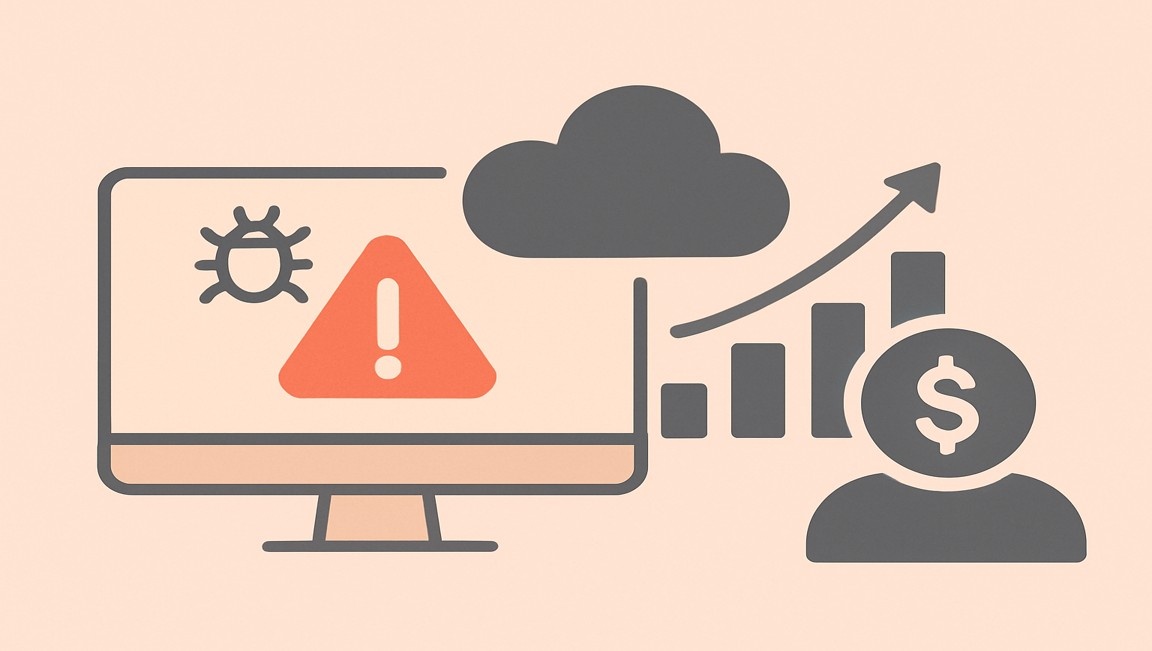Table of content
SHARE THIS ARTICLE
Is this blog hitting the mark?
Contact Us
Table of Content
- What is Cloud Testing?
- Why is Cloud Testing Important?
- What are the Benefits of Cloud Testing?
- How to Do Cloud Testing Effectively?
- What are Some Examples of Cloud Testing Tools?
- Conclusion
- FAQs

Cloud testing is a type of software testing that uses cloud resources to carry out various testing tasks such as performance testing, load testing, security testing, and so on. Instead of depending on traditional on-premises equipment, cloud testing makes use of the huge computational capabilities of cloud service providers.
In this blog post, I will explain what cloud testing is, why it is important, what are its benefits, and how to do it effectively. I will also share some examples of cloud testing tools and best practices that you can use to improve your testing processes and outcomes.
What is Cloud Testing?
Cloud testing is a type of software testing that uses cloud-based services and platforms to perform testing tasks. Cloud testing can be applied to any type of software testing, such as functional testing, non-functional testing, regression testing, integration testing, etc.
Cloud testing can be classified into two categories: testing of cloud-based applications and testing using cloud-based resources.
- Testing of cloud-based applications: This involves testing the applications that are hosted or deployed on the cloud. The main objective of this type of testing is to ensure the quality, performance, security, and reliability of the cloud applications. Some examples of cloud-based applications are web applications, mobile applications, SaaS applications, etc.
- Testing using cloud-based resources: This involves testing the applications that are not hosted on the cloud, but use cloud resources to perform testing tasks. The main objective of this type of testing is to reduce the cost and effort of setting up and maintaining testing environments, and to improve the scalability and flexibility of testing processes. Some examples of cloud resources are virtual machines, storage, network, databases, etc.
Why is Cloud Testing Important?
Cloud testing is important because it offers several advantages over traditional testing methods, such as:
- Cost-effectiveness: Cloud testing reduces the cost of testing by eliminating the need for purchasing, installing, and maintaining expensive hardware and software. Cloud testing also allows you to pay only for the resources you use, and to scale up or down as per your testing needs.
- Faster and easier access: Cloud testing enables faster and easier access to a wide range of devices, browsers, operating systems, and geographies. This helps you to test your applications across different platforms and scenarios, and to ensure their compatibility and usability.
- Scalability and reliability: Cloud testing improves the scalability and reliability of testing processes by allowing you to perform testing tasks in parallel, and to handle large volumes of data and users. Cloud testing also ensures that your testing environments are always available and up-to-date, and that your testing data and applications are secure and compliant.
- Innovation and collaboration: Cloud testing fosters innovation and collaboration by enabling you to use the latest technologies and tools, and to share your testing results and feedback with your team and stakeholders. Cloud testing also allows you to integrate your testing processes with other cloud services, such as DevOps, CI/CD, analytics, etc.
Also read: How to Test Scalability for Cloud-based SaaS Products
What are the Benefits of Cloud Testing?
Cloud testing offers several benefits for software testing, such as:
- Improved quality and performance: Cloud testing helps you to improve the quality and performance of your applications by enabling you to test them under realistic and diverse conditions, and to identify and resolve any issues or defects before they affect your users or customers.
- Reduced time and effort: Cloud testing helps you to reduce the time and effort of testing by enabling you to automate your testing tasks, and to reuse your testing resources and scripts. Cloud testing also helps you to accelerate your testing cycles and deliver your applications faster and more efficiently.
- Enhanced security and compliance: Cloud testing helps you to enhance the security and compliance of your applications by enabling you to test them against various threats and vulnerabilities, and to ensure that they meet the standards and regulations of your industry and domain.
- Increased customer satisfaction and loyalty: Cloud testing helps you to increase your customer satisfaction and loyalty by enabling you to deliver high-quality, high-performance, and secure applications that meet or exceed their expectations and needs.
Also read: Software Testing Life Cycle and Why Do You Need It
How to Do Cloud Testing Effectively?
Cloud testing can be done effectively by following some best practices, such as:
- Define clear testing objectives and scope before moving to the cloud: You should define your testing objectives and scope clearly before moving to the cloud, such as what type of testing you want to perform, what are the expected outcomes, what are the risks and challenges, etc. This will help you to choose the right cloud service provider and testing tool that suit your needs and budget.
- Design and execute test cases that cover the functional and non-functional aspects of the application: You should design and execute test cases that cover the functional and non-functional aspects of the application, such as usability, accessibility, compatibility, performance, security, etc. You should also use appropriate testing techniques and methods, such as exploratory testing, load testing, stress testing, penetration testing, etc.
- Monitor and measure the performance and quality of the application in the cloud: You should monitor and measure the performance and quality of the application in the cloud, such as response time, throughput, availability, reliability, etc. You should also use relevant metrics and indicators, such as error rate, failure rate, resource utilization, etc. You should also analyze and report your testing results and feedback, and take corrective actions if needed.
- Ensure proper data backup and recovery mechanisms in case of any failures or disruptions: You should ensure proper data backup and recovery mechanisms in case of any failures or disruptions in the cloud, such as network outage, service outage, data loss, data breach, etc. You should also have contingency plans and fallback options in place, and test them regularly.
Also read: Desktop Application Testing: Complete Checklist
What are Some Examples of Cloud Testing Tools?
There are many cloud testing tools available in the market, each with its own features and functionalities. Some of the popular cloud testing tools are:
- AWS Device Farm: This is a cloud testing service provided by Amazon Web Services (AWS) that allows you to test your mobile and web applications on real devices in the cloud. You can use AWS Device Farm to perform functional testing, performance testing, security testing, and compatibility testing on various devices, browsers, operating systems, and networks.
- BlazeMeter: This is a cloud testing platform that allows you to perform load testing, performance testing, and API testing on your web and mobile applications. You can use BlazeMeter to simulate millions of concurrent users, generate realistic traffic, and monitor and analyze your application performance and quality.
- Sauce Labs: This is a cloud testing platform that allows you to perform automated testing, manual testing, and visual testing on your web and mobile applications. You can use Sauce Labs to test your applications on over 2,000 devices, browsers, operating systems, and resolutions, and to integrate your testing processes with other cloud services, such as DevOps, CI/CD, analytics, etc.
- BrowserStack: This is a cloud testing platform that allows you to perform cross-browser testing, mobile testing, and visual testing on your web and mobile applications. You can use BrowserStack to test your applications on over 2,000 devices, browsers, operating systems, and resolutions, and to ensure their functionality, compatibility, and usability.
Conclusion
Cloud testing is a type of software testing that uses cloud resources to carry out different testing tasks such as performance testing, load testing, security testing, and so on.
Cloud testing offers several benefits for software testing, such as cost-effectiveness, faster and easier access, scalability and reliability, innovation and collaboration, improved quality and performance, reduced time and effort, enhanced security and compliance, and increased customer satisfaction and loyalty.
Cloud testing can be done effectively by following some best practices, such as defining clear testing objectives and scope, designing and executing test cases, monitoring and measuring the performance and quality, and ensuring proper data backup and recovery.
I hope you enjoyed reading this blog post, and learned something new and useful about cloud testing. If you are looking for a reliable and professional software testing company that can help you with your cloud testing needs. We are a leading software testing company in India that provides all kinds of testing services, including cloud testing, to our clients across the globe.
We have a team of experienced and certified testers who can help you to test your applications on the cloud, and to ensure their quality, performance, security, and reliability. We also use the latest technologies and tools, and follow the best practices and standards of software testing. We can help you to achieve your testing goals and objectives, and to deliver high-quality, high-performance, and secure applications to your users and customers.
Thank you for reading this blog post.😊
Discover More About QA Services
sales@qable.ioDelve deeper into the world of quality assurance (QA) services tailored to your industry needs. Have questions? We're here to listen and provide expert insights


Nishil Patel is the Co-founder of QAble, delivering advanced test automation solutions with a focus on quality and speed. He specializes in modern frameworks like Playwright, Selenium, and Appium, helping teams accelerate testing and ensure flawless application performance.
.svg)














.webp)
.webp)
.png)
.png)











.png)



.png)

.png)

.png)




















.webp)

